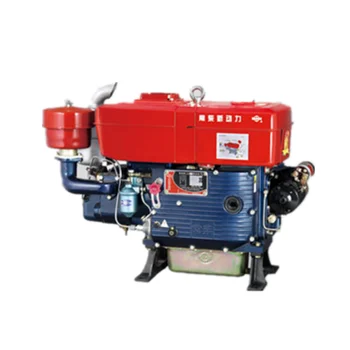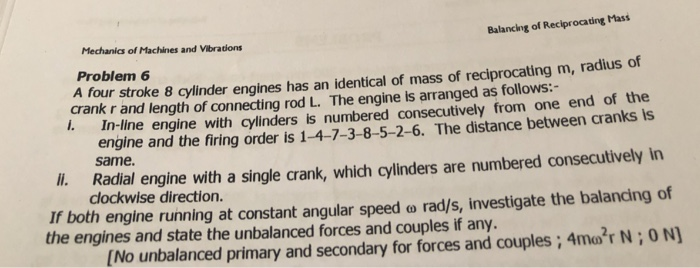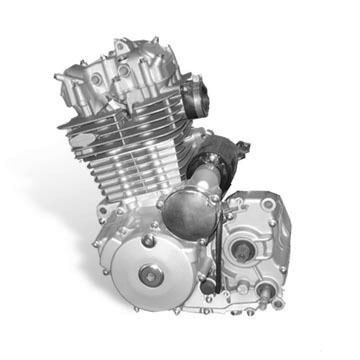The four stroke engine are of two types and these are. Petrol Engine or Gasoline Engine: When petrol is used as fuel in four stroke engine then it is called a four stroke petrol engine. The construction of the petrol engine is slightly different from the diesel engine. In petrol engine there is a spark plug for the combustion of the fuel. Are there any successful project out there, chaining two 4 stroke single cylinder? Depends on your definition of success but it can be made to work. Will the engine sounds be good? I mean, because of the chain's tension, will the shaft sync as good as welding the shaft? This depends on supporting mods like the exhaust design.

Four cylinder engines are the most fuel efficient internal combustion engines. They however have lower vibration and noise levels than the two stroke engines, but have a higher vibration level than a Wankel engine. They also have a lower power-to-weight ratio than a two stroke engine of comparable power output.

Enya engine
ENYA R.155.4C engine from modelflight.com
| engine | capacity in cc | power output in kWatts | J/ccfam |
|---|---|---|---|
| 120FS | 19.93 | 1.566 at 11,250 rpm | 0.838 |
| R.155.4C | 25.42 | 1.86 at 11,250 rpm | 0.780 |
Notes
Four Stroke Single Cylinder Engine The Mechanical
- All Enya engines use ' glow fuel' : methanol + 5 to 15 % nitromethane + 16% minimum synthetic castor oil lubricant.
- J/ccfam = energy in Joules per cc of fuel-air mixture
- For RCVxx-CD, J/ccfam = ( power_in_watts x 60 x 2 ) / (capacity_in_cc x rpm ) = measure of energy efficiency
O.S. Engines


O.S. Engines FS-70 Ultimate high performance, four stroke, engine with a fuel pump. Photograph from www.osengines.com
O.S. Engines FT-300 two cylinder engine from www.osengines.com
Four Cylinder Engines
| engine | cylinders | capacity in cc | weight in kg | power output in kWatts | kW / kg | J/ccfam |
|---|---|---|---|---|---|---|
| FS-70 Ultimate | 1 | 11.45 | 0.502 | 0.894 at 11,000 rpm | 1.781 | 0.852 |
| FS-91 S II | 1 | 15 | 0.649 | 1.193 at 11,000 rpm | 1.838 | 0.868 |
| FS-120S III | 1 | 20 | 0.921 | 1.56 at 12,000 rpm | 1.694 | 0.76 |
| FT-160 | 2 | 26.5 | 1.1 | 1.49 at 10,000 rpm | 1.354 | 0.675 |
| FS-200U | 1 | 32.4 | 0.83 | 2.16 at 9,000 rpm | 2.605 | 0.890 |
| FT-300 | 2 | 49 | 1.828 | 3.0 at 7,000 rpm | 1.641 | 1.050 |
| FF-300 radial | 5 | 49.7 | 2.673 | 3.0 at 8,000 rpm | 1.122 | 0.905 |
| FF-320 | 4 | 53.2 | 2.19 | 3.06 at 8,000 rpm | 1.37 | 0.846 |
Notes
- All O.S. engines use ' glow fuel' : methanol + 5 to 15 % nitromethane + 16% minimum synthetic castor oil lubricant.
- J/ccfam = energy in Joules per cc of fuel-air mixture
- For RCVxx-CD, J/ccfam = ( power_in_watts x 60 x 2 ) / (capacity_in_cc x rpm ) = measure of energy efficiency
The O.S. Engines FF-320 'flat four' from osengines.com/engines/osmg1320.html
SAITO single cylinder engines
The SAITO 180 engine. Photograph from horizonhobby.com
| Saito Engine | capacity in cc | weight in kg | power output in kWatts | Power-to-Weight in kWatts/kg | min rpm | max rpm | fuel efficiency in J/ccfam |
|---|---|---|---|---|---|---|---|
| FA-45S | 7.50 | 0.440 | 0.522 | 1.186 | 2,000 | 12,000 | 0.696 |
| FA-50 | 8.20 | 0.435 | 0.634 | 1.457 | 2,000 | 12,000 | 0.773 |
| FA-56 | 9.20 | 0.410 | 0.671 | 1.637 | 2,000 | 12,000 | 0.729 |
| FA-56F | 9.20 | 0.410 | 0.671 | 1.637 | 2,000 | 12,000 | 0.729 |
| FA-62a | 10.24 | 0.469 | 0.746 | 1.590 | 2,000 | 12,000 | 0.728 |
| FA-65 | 10.60 | 0.550 | 0.708 | 1.288 | 2,000 | 12,000 | 0.668 |
| FA-72 | 11.80 | 0.470 | 0.895 | 1.904 | 2,000 | 12,000 | 0.758 |
| FA-80 | 13.10 | 0.540 | 0.969 | 1.795 | 2,000 | 12,000 | 0.740 |
| FA-82a | 13.80 | 0.453 | 1.119 | 2.469 | 2,000 | 12,000 | 0.811 |
| FA-91S | 15.00 | 0.555 | 1.193 | 2.150 | 2,000 | 11,000 | 0.868 |
| FA-100 | 17.10 | 0.551 | 1.342 | 2.436 | 2,000 | 11,000 | 0.856 |
| FA-120S | 20.00 | 0.900 | 1.641 | 1.823 | 1,900 | 10,500 | 0.937 |
| FA-125a | 20.52 | 0.700 | 1.641 | 2.344 | 1,800 | 10,500 | 0.914 |
Notes
- All Saito engines use ' glow fuel' : methanol + 5 to 15 % nitromethane + 16% minimum synthetic castor oil lubricant.
- J/ccfam = energy in Joules per cc of fuel-air mixture
- For RCVxx-CD, J/ccfam = ( power_in_watts x 60 x 2 ) / (capacity_in_cc x rpm ) = measure of energy efficiency
SAITO multi-cylinder engines
Images from horizonhobby.com
The 'vibration-free' SAITO FA-182TD.
The Saito FA-300T twin engine.
The SAITO FA-170R three cylinder radial engine.
Single Cylinder Four Stroke
The Saito FA-325R5 radial engine.
Engine trends for four stroke engines
Pout scales with engine capacity as Pout = 0.073 * x + 0.031 for Pout in kWatts, where x is the engine capacity in cc.
The average power-to-weight ratio for the above engines is 1.727 kWatts / kg. The superiority of the Saito engines in respect of power-to-weight ratios is clear.
The average engine efficiency for the above engines is 0.813 J / ccfam. For the Saito engines, we notice the engine efficiency saturates for engines with a capacity of 17 cc and above.
Your Performance Plating Headquarters
To help you plan ahead for your return to racing, riding or playing, note that our current turnaround time for your cylinder(s) is approximately one to two weeks. Note that 'turn around time' is our time in-house and does not include shipping time to us or shipping time back to you.
With the latest available technologies, equipment, materials and facilities, PowerSealUSA specializes in state-of-the-art Cylinder Plating, Repair, and Reconditioning.
No matter your motor sport, PowerSeal USA will address all of your cylinder needs. Our capabilities include:
NikaSeal (Nickel Silicon Carbide) PlatingAntique/Vintage/Steel/Cast Iron RepairSingle or Multi-Cylinder Blocks
2-stroke or 4-stroke
Welding
Boring
Custom Machining
Diamond Plateau Honing
Custom-Fit Piston Clearances
Expedited Service
Cylinder Exchange
Big Bore Kits
Piston and Gasket Kits
Coated Pistons
 Dealer Programs
Dealer Programs